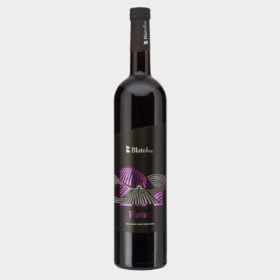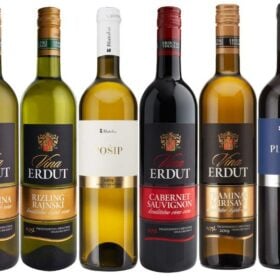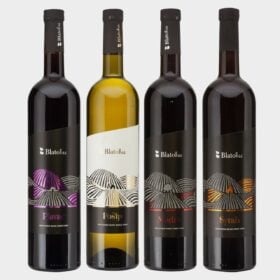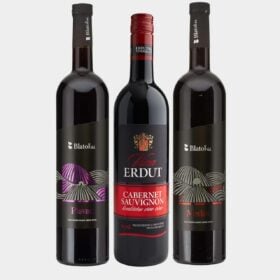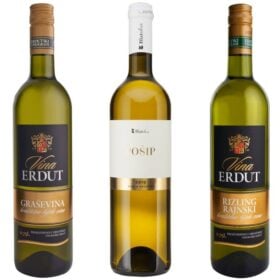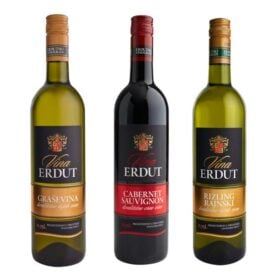De Zinfandel is a grape that originates from Croatia. It is also known as the Crljenak Kaštelanski and Tribidrag. The Zinfandel is a red wine grape used to make both still and sparkling wines. The grape has a long history in Croatia, where it has been cultivated for over 600 years.
The first documented use of the word “Zinfandel” was in 1871, when a Boston newspaper reported that California vines were grown from grape cuttings brought from Austria. The grape's popularity also grew with its association with the “White” wine style Zinfandelwhich began in the 70s.
History of the Zinfandel grape
Zinfandel is a black-skinned grape variety. It is grown in more than 10 percent of California's vineyards and is genetically equivalent to the Croatian grapes Crljenak Kaštelanski and Tribidrag, as well as to the Primitivevariety traditionally grown in Apulia (the “heel” of Italy), where it was introduced in the 18th century. century. The grape made its way to the United States in the mid-19s, where it became known for variations of a name applied to another grape, probably “Zieerfandler” from Austria.
The grape is native to Croatia and made its way to Italy in the 19th century and then to the United States. It is now one of the most widely planted grapes in California. Zinfandel grows best in warm climates and its popularity has grown with the “White” wine style Zinfandelwhich began in the 70s. The grape is used to make a wide variety of wines, from light and fruity to robust and full-bodied.
The history of the Zinfandelgrape variety is long and complex. DNA fingerprinting in the late 20th century concluded that it is identical to the Primitivegrape from Apulia in southeastern Italy, where it was known as early as 1824. However, an Italian study published in 2001 claimed that despite superficial similarities, there are several important genetic differences between the two grapes.
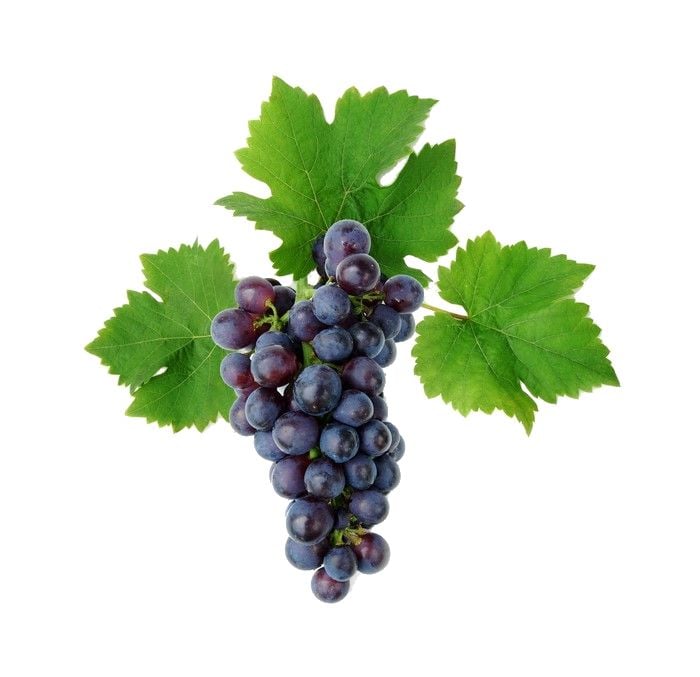
The popularity of Zinfandel
De Zinfandelgrape is a versatile grape, which can be used for a robust Red wine, or a semi-sweet one rose (blush style) wine called Witte Zinfandel† The high sugar content of the grape can be fermented to an alcohol content of more than 15 percent. The alcohol content also plays a role in the taste of the wine, with a higher alcohol content giving the wine a “hotter” feel.
ZinfandelWines made from ripe grapes grown in warm regions generally have a high alcohol content and flavors of blackberry, anise and pepper. Wines made from grapes with a cooler climate or the earlier ripening Primitiveclone tend to have a lower alcohol content and flavors of red berries, such as raspberry.
De Zinfandel is a versatile grape that can be used to make a wide variety of wines, from light and refreshing whites to rich and full-bodied reds. The grape is also used to make dessert wines, such as the popular Zinfandel Port.
Croatia and Zinfandel
Croatia is one of the world's leading producers of Zinfandelwines, and the country's vineyards are home to some of the oldest vines in the world. The Zinfandel is a popular grape in Croatia and is grown in all major wine regions of the country. The grape is also widely planted in other parts of Europe, including Italy, Austria and Hungary.
In recent years, the Zinfandel has become increasingly popular in the United States, where it has grown in a number of different states. Zinfandel is a versatile grape that can be used to make a wide variety of wines.
Whether you're looking for a light and refreshing white or a rich and full Red wine, you will definitely a Zinfandel-find wine that suits your taste. If you are looking for a truly unique and unforgettable wine experience, be sure to check out the Zinfandel-wines of Croatia.

In a relationship with Primitive, Plavac Mali, Crljenak Kaštelanski and Tribidrag
However, in 2001, a team of Croatian scientists discovered that Zinfandel was actually identical to Crljenak Kaštelanski, a red grape variety from Croatia. They were published in the journal Science in 2002. The news caused quite a stir in the wine world, as it meant the true origin of Zinfandel was unknown.
However, many ampelographers believe that Zinfandel is actually a mutated clone of Tribidrag, another Croatian grape variety. So although the exact origin of Zinfandel is still a bit of a mystery, it is clear that this grape has strong links with Croatia.
DNA profiling in 1993 on Croatian samples and the UCD Old Vines Zinfandelvineyard in Davis, showed that Plavac Mali was identical to Crljenak Kaštelanski (aka Tribidrag), a variety native to Dalmatia.
dr. Lamberti suggested in 1976 that Primitive the Croatian variety Plavac Mali could be. This was confirmed in 1982 by Goheen, who found that they were similar, but not identical, probably as a result of isoenzyme analysis. However, some Croats became convinced that Plavac Mali was the same as Zinfandel, including Croatian-born winemaker Mike Grgich.
Primitive en Zinfandel same grape
In 1993, Meredith used a DNA fingerprinting technique to confirm that Primitive en Zinfandel are clones of the same race. Comparative field trials have shown that “Primitiveselections were generally superior to those of Zinfandel, with earlier fruit maturity, comparable or higher yield and comparable or lower susceptibility to forest rot.” This is consistent with the theory that Primitive was selected as a precocious clone of a Croatian grape.
The first documented use of the term “Zinfandel” was in 1832, when a Boston newspaper referred to an import from Hungary. The grape is thought to have been brought to North America in the early 19s, where it became known by a number of different names, including “Zinfandel“, “Black Zinfandel” and “Red Zinfandel† The exact origin of the grape is still unknown, but it is believed to have originated in Croatia.
The grape made its way to California in the 1850s, where it became a popular grape for making home wines. The commercial production of Zinfandel started in 1869, when the first vines were planted in Sonoma County. Nowadays it is Zinfandel one of the most widely planted red grape varieties in California.
The relationship of Primitive / Zinfandel with Plavac Mali
Meredith's team discovered in 1998 that Plavac Mali did not Zinfandel was, but the parent of the other. In 2000 they discovered that Primitive / Zinfandel was a parent of Plavac Mali† The other parent of Plavac Mali was defined by Ivan Pejić and Edi Maletić (University of Zagreb) as Dobričić, an ancient variety from the Adriatic island of Šolta.
This discovery led to a search for the Central Dalmatian coastal strip and the offshore islands. A matching DNA fingerprint was eventually found among the samples. The match came from a vine which was sampled in 2001 in the vineyard of Ivica Radunić in Kaštel Novi.
This Crljenak Kaštelanski (“Kaštela Red”) looks like Primitive / Zinfandel in his original home, although some genetic divergence may have occurred since their separation. Meredith now refers to the breed as “ZPC” – Zinfandel / Primitive / Crljenak Kastelanski.
The search for the origin of Zinfandel lasted many years and many vineyards. The discovery of Crljenak Kaštelanski was a major breakthrough. This grape variety corresponds best so far with Zinfandel / Primitive† There may have been some genetic divergence since they separated, but this is the most likely candidate for the ancestor of Zinfandel† Meredith now refers to this variety as “ZPC” – Zinfandel / Primitive / Crljenak Kastelanski.

Zinfandel wine from Croatia
Zinfandel is a red wine grape grown in Croatia. The vineyard in which it was found had only nine vines and they were mixed with thousands of others vines. More were added in 2002 vines found in the Dalmatian coastal town of Omiš. The wines made from this grape are reputed to have more blackberry and herbal aromas. Zinfandel is also grown in California, where it appears to grow less vigorously than its sibling. The first Croatian ZPC wine was created in 2005 by Edi Maletić.
In 2012, Jancis Robinson, Julia Harding and Swiss grape geneticist Dr. José Vouillamoz Wine Grapes, a book detailing their quest for the origin of Zinfandel is described. After years of research and DNA testing of vines from vineyards around the world, they discovered that Zinfandel is a Croatian grape known as Tribidrag since the 15th century. This discovery was made after examining a single 90 year old vine from the garden of an elderly lady in Split, Croatia.
Zinfandel a versatile grape
Zinfandel is a versatile grape that can be used to make a wide variety of wines. It is usually associated with Red wine, but it can also be used to White wine en rose to make. Zinfandel is a robust grape that thrives in warm climates. It produces grapes with thin skins and high sugar content. If conditions are right, the grapes can be harvested late to make dessert wine. Zinfandel is known for its ability to express the characteristics of its terroir and the skill of its winemaker.
The Zinfandel grape is known for its uneven ripening pattern, with some bunches containing both raisin-like, overripe grapes and green, unripe grapes. Some winemakers choose to vinify the bunches at these different levels of ripeness, while others harvest the bunches by hand, even with single berries, in multiple passes through the vineyards over several weeks. This very labor-intensive practice is part of the high cost of some Zinfandels.
Zinfandel wines are sometimes too hot
Red Zinfandel wines have been criticized for being too “hot” (too alcoholic). However, modern winemaking techniques have helped make them more accessible. On the other hand, some Zinfandel producers believe that alcohol-removing technologies, such as reverse osmosis and rotating cones, remove a sense of terroir from the wine. Like a wine the tannins and other components to balance 15% alcohol, it must be accepted on its own terms.
Try a Plavac Mali from Croatia
- Original price was: 19,98. 13,99Current price is: 13,99. Add to Cart
Zinfandel is a versatile grape that can be used to make a variety of wines, from light and fruity to rich and full-bodied. Whatever your preference, there is a Zinfandel for you. And if you're looking for something truly unique, try one Plavac Mali from Croatia.
The Zinfandel grape originally comes from the Croatian region Dalmatia, making it the perfect wine to pair with traditional Croatian cuisine. Both Zinfandel and his brother Plavac Mali is a versatile wine that can be enjoyed with grilled meats, pasta dishes and even desserts. If you're looking for the perfect way to enjoy your next Croatian meal, make sure to pair it with a glass of Zinfandel / Plavac Mali.
With its intense flavor and deep ruby red color, this wine is sure to impress. So don't wait any longer, and get a bottle today Plavac Mali on. You will have no regrets!


